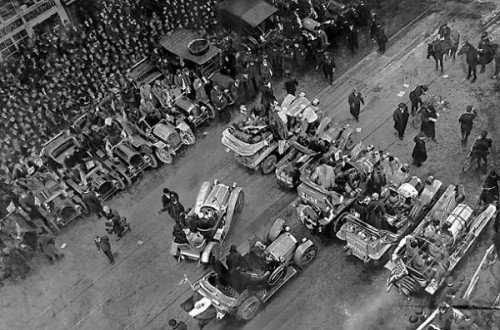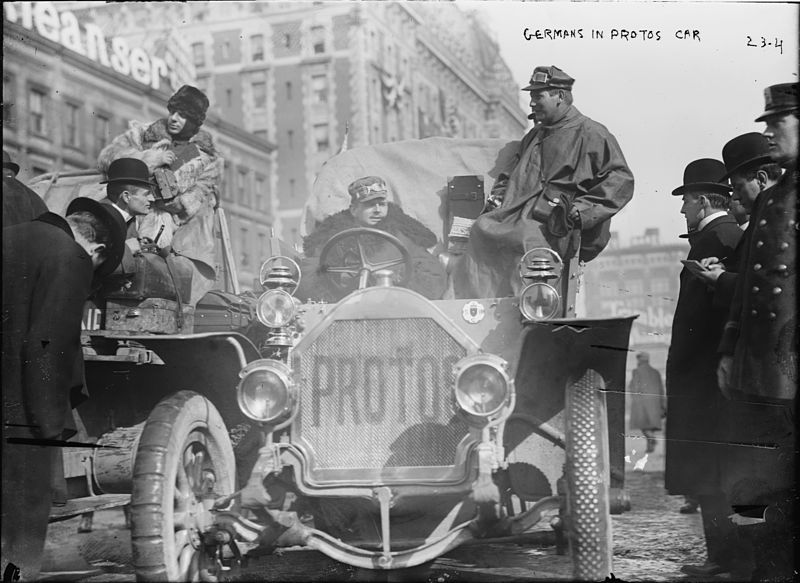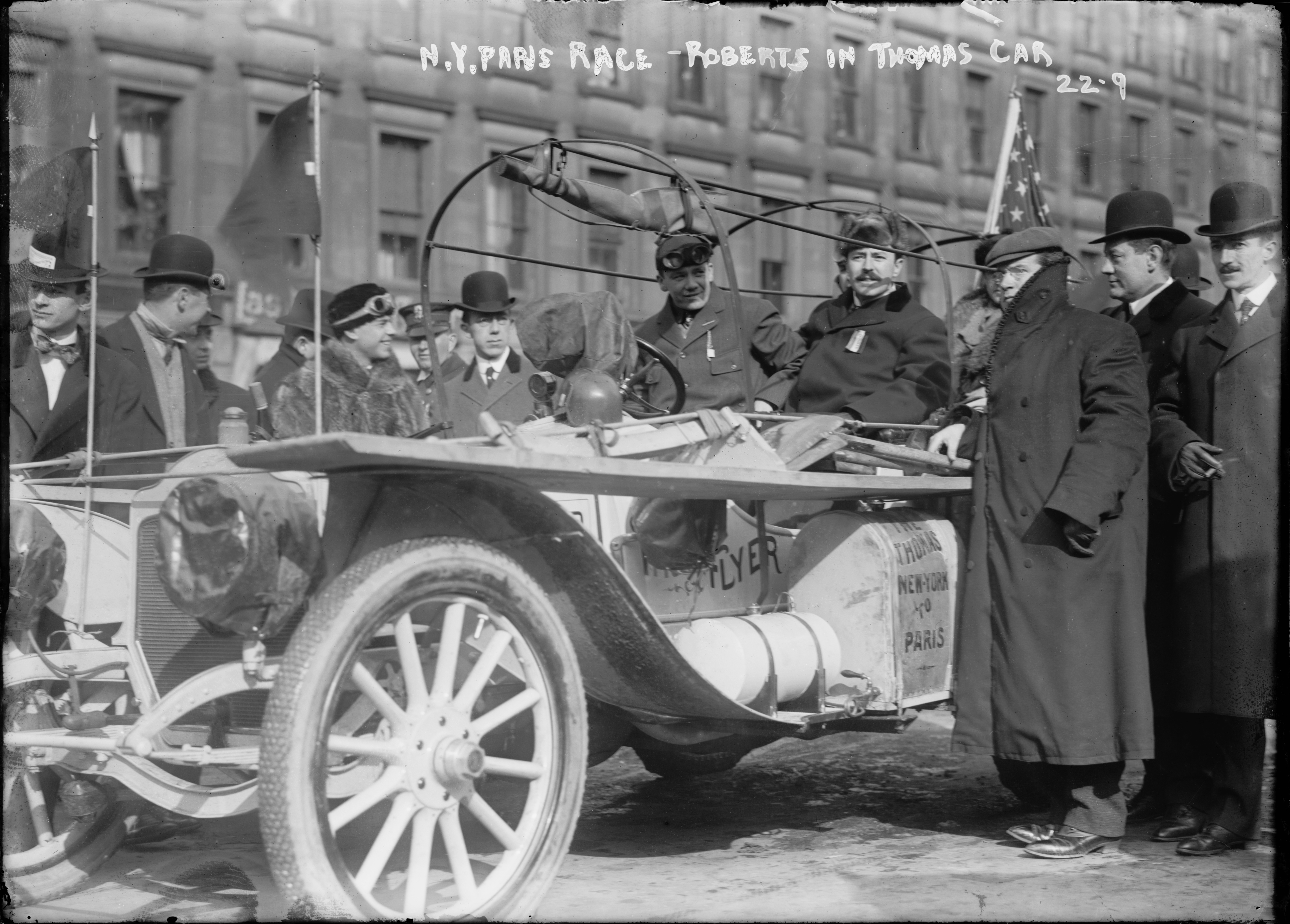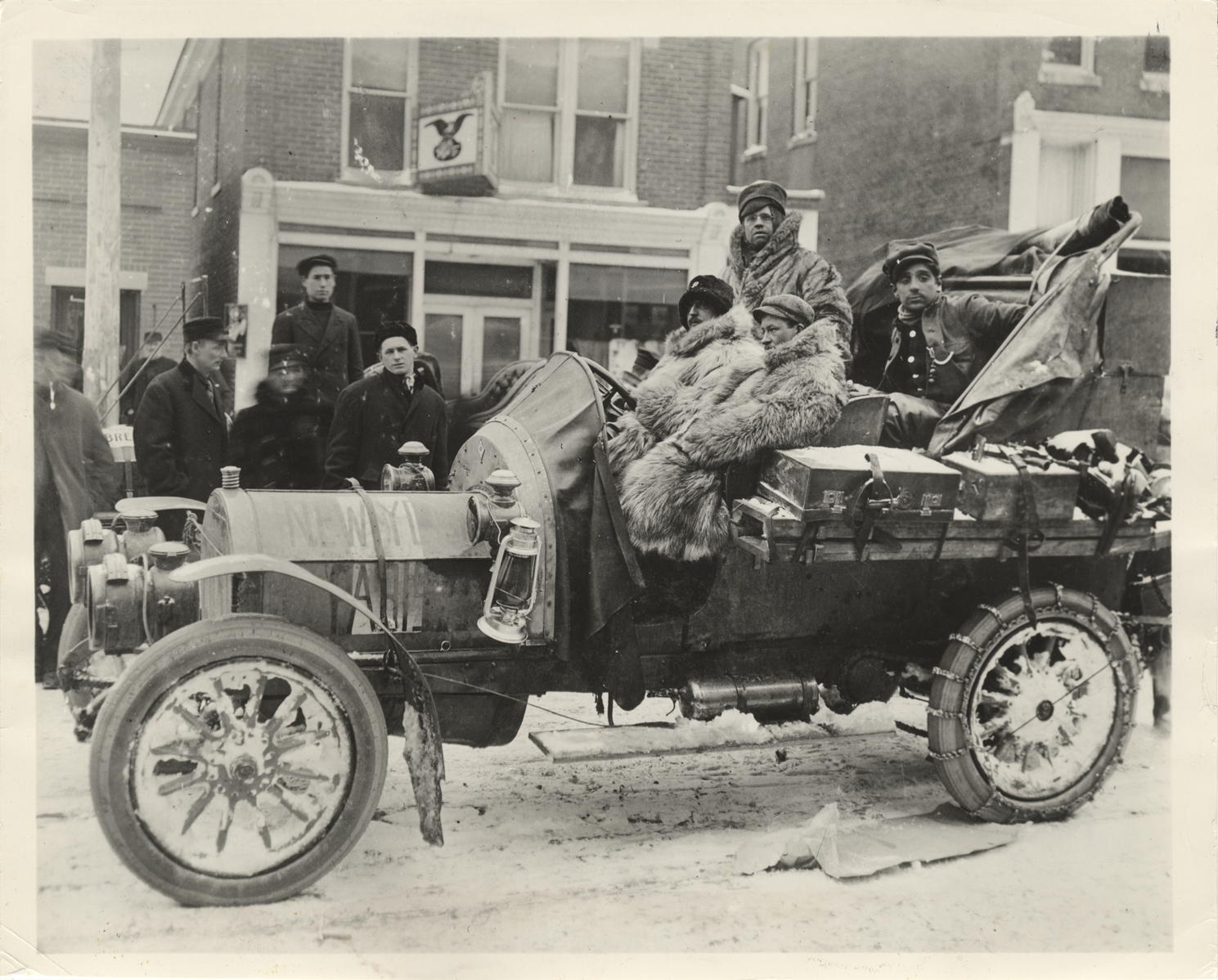
Now here's a proper bunch of chaps: These worthy gentlemen are about to embark on the The New York-Paris race of 1908. After the indifferent success of the 1907 Peking to Paris event, it was inevitable that people would want to go through it all again, but this time on an even bigger scale.
29-Dec-22 historicracing.com
Teaming up with the French newspaper Le Matin, The New York Times proposed a race that would take it's competitors around three-quarters of the globe. Starting in New York City, they would first have to drive across the largely road-less American continent to San Francisco. There the cars would be loaded on board a ship that would carry them north to Valdez in Alaska. They would then be required to drive cross the Alaskan wilderness to the shores of the Bering Straits before crossing over the pack-ice to the Chukotski Peninsular in Siberia. All they had to do then would be to drive the length of Russia, and across the whole of Europe to reach the finishing line in Paris. Simple!
And so it came to be that on February 12th 1908, a huge crowd thronged the streets to witness a momentous event. Only six teams would be brave enough to take up the challenge; Five from Europe and a single, solitary example of good-old, home-grown American ingenuity.

From Berlin in Germany came the Protos and it's roistering military crew.

The home nation's representative would be the Thomas team from Buffalo, lead by driver-mechanic George Schuster.

Italy would be represented by a Zust from Milan.
While France, the largest car producing nation in the world at that time, would supply no less than three of the entries;
The experienced Parisian "Voiturette" racing outfit Sizaire-Naudin, with high-profile sponsorship from Michelin, would provide the event's smallest contender.
Also from Paris would come a factory entered De Dion-Bouton.
And for the final entry we have the representative of the Motorbloc company from Bordeaux.
At 11:15 am there was the sound of a shot from an especially prepared golden pistol. And the race was on. Snow drifts would soon claim the first casualty. The little Sizaire-Naudin getting lost and stuck before it had even got out of the Hudson Valley. While the Motorbloc was to gasp it's last breath in the mid-western wastes of Iowa.
The Thomas Flyer crosses the frozen Medicine Bow River outside Laramie in March 1908.
So that they were down to just four contenders before they'd even got half-way across the USA. But those four would all make it through to San Francisco; Albeit not without controversy.
The Dastardly German Protos team had been seen loading their car on to a railway truck during the journey west, and there were accusations that cheating was already afoot.
The next stage would be through Alaska. But the Protos team would once again attract the ire of the organizers, by electing to skip the proposed crossing of the Bearing Strait and sail directly to Japan instead.
So it was that only three cars would come to make the trip north; The Thomas, the Zust and the De Dion-Bouton. But it would prove a fruitless diversion. The wilds of Alaska were not at all conducive to harmonious motoring, and our adventurers would soon give up and join the Germans on the high-seas to Tokyo.
By the time the competitors re-convened in Vladivostok, on the Pacific shores of Tsarist Russia, they were down to just three. The De Dion-Bouton team, feeling unequal to the challenge of Siberia, had joined their compatriots in the "Throwing-in of the Towel" ceremony.
The three survivors slogged slowly across the mud-ridden wastes of Siberia and the Russian Steppes, sometimes progressing by only a few miles a day. Until finally, 169 days out from New York, The Protos team finally found itself cruising the streets of Paris. Four whole days ahead of the Americans in their Thomas. But the organizers were to deal them a devastating blow. Unhappy with the perfidious behaviour of the German's during the early stages of the race, they hit them with a 30 day penalty. Giving victory to George Schuster's Thomas team by 26 days.
The final finisher, the Italian Zust, would eventually roll into town two whole months later!
At the time, The New York-Paris race attracted considerable world-wide interest, and the Thomas company were to be widely acclaimed for their victory. But it would have little impact on the long term success of it's contenders. Today the Thomas brand is only remembered for one thing, winning the New York-Paris race! By 1920 they'd closed their doors for good as motor manufacturers, as had Zust. And Sizaire-Naudin would only hold out for a couple of years longer. Protos and Motorbloc both failed to see out the twenties, so that only De Dion-Bouton would survive into the third decade of the century. And even they, the most prodigious motor manufacturer in the World prior to WW1, would not build any more cars after 1932.
George Schuster died in 1972 at the age of 99, after playing a significant role in the restoration of the original race-winning Thomas by the Harrah Museum in Reno. It still lives there to this day, along with the 6 foot high, 1600 lb, marble and bronze trophy that was presented to Schuster's winning crew.
The Zust has also survived, currently safe in the hands of a Canadian collector on Vancouver Island. While the Protos can be seen on public display in the Deutches Museum in Munich.